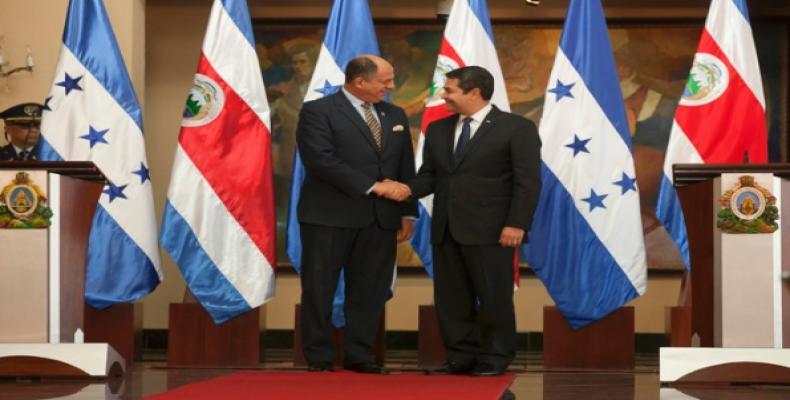San Salvador, December 19 (teleSUR-RHC)-- The Central American Integration System, or SICA, held its 46th ordinary summit in the Salvadoran capital of San Salvador. Presidents and high level officials from every Central American country were present at the gathering.
Among the top issues on the agenda at the summit were the Central American migration issue, commercial and import-export treaties, and integration. Following the conclusion of the summit on Friday evening, Honduras assumed the pro-tempore presidency of the regional bloc.
U.S. authorities have said that more than 100,000 Central American children have undertaken the 3,000-mile journey to the United States, with the number of unaccompanied immigrant children trying to enter the country from the Mexican border doubling in Oct. 2015, from the previous year.
Meanwhile roughly 6,000 Cuban migrants are currently stuck in Costa Rica. They are looking to continue en route to the United States, but are barred from entering other Central American countries, many which blame the U.S. “wet foot-dry foot” policy for spurring the migration of Cubans to the United States.
SICA was created in 1991 following the bloody armed conflicts and civil wars in the region in the 1980s and 1990s.
SICA Secretary General Victoria Velasquez said the regional bloc is a platform that has gradually given space to a process of integration that has allowed the Central American region to overcome common challenges.
In its first institutional framework, the organization included Guatemala, El Salvador, Honduras, Nicaragua, Costa Rica and Panama. Belize joined in 2000 as a full member, while the Dominican Republic became an associated state in 2004 and a full member in 2013. Brazil, Mexico, Chile, China, Spain, Germany and Japan are observers.


